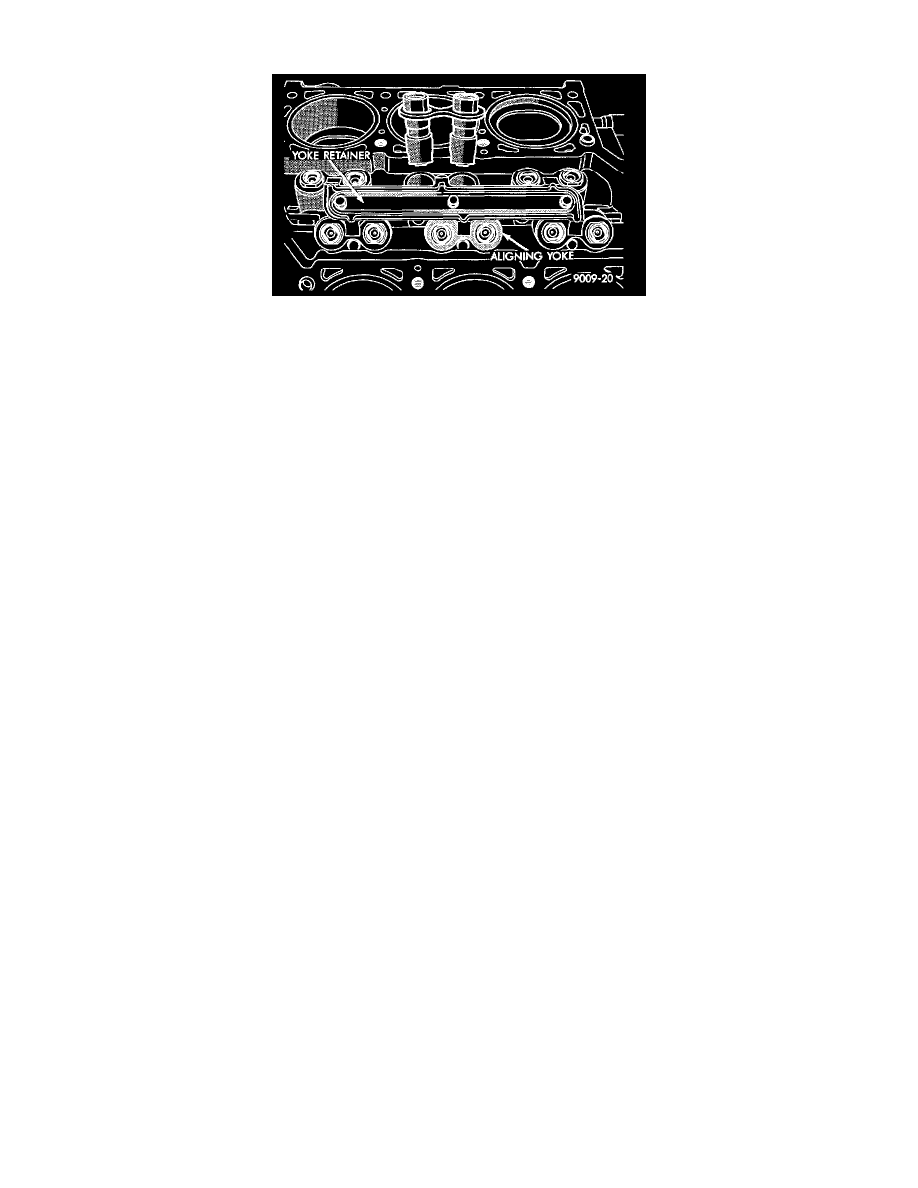Grand Voyager V6-3.3L VIN G Flex Fuel (1999)

Lifter / Lash Adjuster: Testing and Inspection
Roller Tappets Aligning Yoke And Retainer
The valve train includes roller tappet assemblies, aligning yokes and yoke retainer. Roller tappet alignment is maintained by machined flats on tappet
body being fitted in pairs into six aligning yokes. The yokes are secured by an alignment yoke retainer.
PRELIMINARY STEP TO CHECKING THE HYDRAULIC TAPPETS
Before disassembling any part of the engine to correct tappet noise, read the oil pressure at the gauge. Install a reliable gauge at pressure sending unit
if vehicle has no oil pressure gauge and check the oil level in the oil pan. The pressure should be between 30 and 80 psi (206.8 to 551.6 kPa) at 2000
rpm.
The oil level in the pan should never be above the MAX mark on dipstick, or below the MIN mark. Either of these two conditions could be
responsible for noisy tappets. Oil Level Check: stop engine after reaching normal operating temperature. Allow 5 minutes to stabilize oil level, check
dipstick.
OIL LEVEL TOO HIGH
If oil level is above the MAX mark on dip stick, it is possible for the connecting rods to dip into the oil while engine is running and create foam. Foam
in oil pan would be fed to the hydraulic tappets by the oil pump causing them to become soft and allow valves to seat noisily.
OIL LEVEL TOO LOW
Low oil level may allow pump to take in air which when fed to the tappets, causes them to become soft and allows valves to seat noisily. Any leaks on
intake side of pump through which air can be drawn will create the same tappet action. Check the lubrication system from the intake strainer to the
pump cover, including the relief valve retainer cap. When tappet noise is due to aeration, it may be intermittent or constant, and usually more than one
tappet will be noisy. When oil level and leaks have been corrected, engine should be operated at fast idle to allow all of the air inside of the tappets to
be bled out.
VALVE TRAIN NOISE DIAGNOSIS
To determine source of valve train noise, operate engine at idle with cylinder head covers removed and listen for source of the noise.
NOTE: Worn valve guides or cocked springs are sometimes mistaken for noisy tappets. If such is the case, noise may be dampened by applying side
thrust on the valve spring. If noise is not appreciably reduced, it can be assumed the noise is in the tappet. Inspect the rocker arm push rod sockets and
push rod ends for wear.
Valve tappet noise ranges from light noise to a heavy click. A light noise is usually caused by excessive leak-down around the unit plunger which will
necessitate replacing the tappet, or by the plunger partially sticking in the tappet body cylinder. A heavy click is caused either by a tappet check valve
not seating, or by foreign particles becoming wedged between the plunger and the tappet body causing the plunger to stick in the down position. This
heavy click will be accompanied by excessive clearance between the valve stem and rocker arm as valve closes. In either case, tappet assembly should
be removed for inspection and cleaning.
